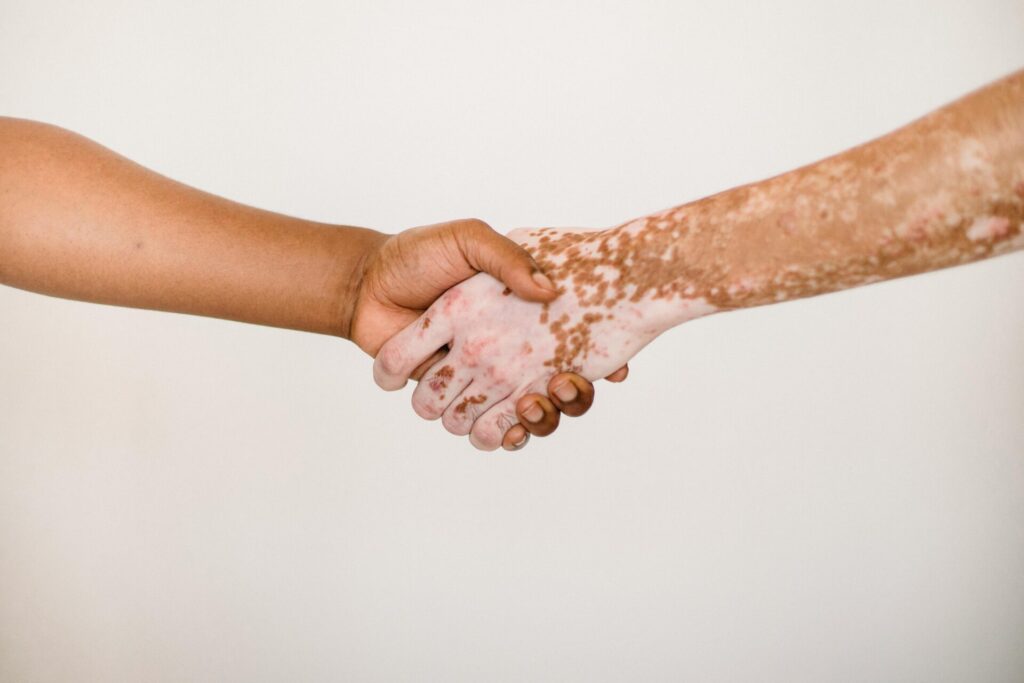Top Trans Terms: A Daring Dip Into the Queer Lexicon
In our ever-evolving world, the language we use to describe gender identities is expanding and becoming more nuanced. For those unfamiliar with the transgender community, navigating this language can feel like walking through a maze. One term gaining traction is “egg,” a casual way to describe someone who hasn’t yet embraced their true gender identity. Much like an egg, their real selves hide inside, waiting to hatch
This term is just one of many within the transgender community. From “deadnaming” to “passing,” there are numerous concepts that might be new to many. This article aims to clarify some of these terms, helping readers understand the diverse language used to describe transgender experiences.

However, this isn’t just about terminology; it’s about showing respect and acknowledging the uniqueness of each person’s journey. In this article, we’ll explore these terms with the sensitivity and understanding that everyone deserves. As our society moves toward greater acceptance, using inclusive language is key. Let’s dive into the world of transgender terminology and learn how we can contribute to a more inclusive society.
Understanding the Egg Metaphor

What Does “Egg” Mean?
In transgender communities, the term “egg” refers to someone who hasn’t yet realized or accepted their transgender identity. Imagine a person as an egg, with their true gender identity hidden inside, waiting to emerge. People considered eggs might show signs of being transgender, like experiencing gender dysphoria or questioning their gender, but they haven’t openly acknowledged or embraced their identity.
Recognizing Signs
Eggs may engage in activities aligned with their true gender identity but remain unaware or in denial about being trans. Understanding and supporting someone in this stage requires patience and respect for their personal journey.
Deadnaming: Why It Matters
Understanding Deadnaming
Deadnaming is the act of using a transgender person’s birth name after they have started their transition and chosen a new name. This practice can be deeply hurtful and disrespectful because it disregards the person’s chosen identity and can bring back painful memories.
Impact on Well-being
Deadnaming can lead to significant emotional distress and feelings of dysphoria. It’s crucial to respect someone’s chosen name and pronouns as part of supporting their gender identity. Whether intentional or not, using a person’s dead name should be avoided. Correcting and learning from mistakes is essential in being an ally to transgender individuals.
The Stealth Experience

Living Stealth
A transgender person living in their affirmed gender while keeping their trans status private is said to be living ‘stealth. In this scenario, coworkers, acquaintances, and even some friends remain unaware of their transgender history. They may choose this path for safety, comfort, or the desire to be recognized as their affirmed gender without the complexities of being openly trans.
Why Some Choose Stealth
For some, going stealth is about protecting themselves from discrimination or bias. For others, it’s a way to fully embrace their gender identity without needing to explain it to others. It’s important to respect each individual’s choice regarding their privacy and how they navigate their identity in various aspects of their life.
Gender Euphoria: Celebrating Affirmation
What Is Gender Euphoria?
Gender euphoria is the positive, affirming feeling a transgender person experiences when others recognize and validate their gender identity. It contrasts with gender dysphoria and reflects the joy of being seen as one’s true self. Gender euphoria can manifest in many ways, such as feeling confident in gender-affirming clothing or experiencing happiness when others correctly use one’s chosen name and pronouns.
Types of Gender Euphoria
- Affirming Presentation: Happiness when wearing clothes, hairstyles, or makeup that align with one’s gender identity.
- Body Affirmation: Joy from physical changes due to hormones or surgery.
- Social Recognition: Feeling validated when others use correct names or pronouns.
Gender euphoria is a crucial part of many transgender individuals’ journeys and reinforces their sense of self.
Passing: A Complex Concept
What Does “Passing” Mean?
Passing refers to a transgender person being perceived by others as their affirmed gender, rather than the sex they were assigned at birth. For example, a trans man is said to “pass” if others see and treat him as a man without questioning his gender.
Why Passing Matters
Passing can be important for several reasons:

- Safety: It can help avoid harassment or violence.
- Validation: Being seen according to one’s true gender can affirm identity and reduce dysphoria.
- Comfort: Passing might help someone feel more at ease in social situations.
However, the pressure to pass can be challenging. Not everyone can or wants to pass, and the concept can reinforce harmful stereotypes about what it means to “look” or “act” like a certain gender. It’s important to recognize that passing is not the ultimate goal for all transgender individuals, and respect should be given to everyone, regardless of how well they conform to societal expectations.
The Process of Transitioning
What Is Transitioning?
Transitioning is the process a transgender person undergoes to align their gender identity with their physical appearance, social roles, and legal status. Transitioning is highly individualized and can involve social, medical, and legal changes. Not all transgender people will pursue every aspect of transition, and the choices they make depend on personal goals, resources, and circumstances.
**Social Transition:**
– Changing one’s name and pronouns to coincide with one’s gender identity.
– Adjusting clothing, hairstyle, and other aspects of personal presentation to reflect one’s gender identity (ex. AFAB person wearing traditionally male clothing).
– Coming out to friends, family, colleagues, and others in one’s social circles.
**Medical Transition:**

– Hormone Therapy: Taking hormones such as testosterone or estrogen to develop secondary sex characteristics aligned with one’s gender identity (e.g., facial hair for trans men, breast development for trans women).
– Surgery: Some individuals may choose to undergo surgeries, such as top surgery (chest masculinization or breast augmentation) or bottom surgery (genital reconstruction), to align their bodies with their gender identity.
– Voice Therapy: Some may seek voice training to help their voice better match their gender identity.
**Legal Transition:**

– Changing legal documents, such as driver’s licenses, passports, and birth certificates, to reflect one’s affirmed name and gender marker.
– Navigating legal processes to ensure that one’s gender identity is recognized in various official contexts.
Transitioning is a deeply personal process, and not all transgender people will pursue every aspect of it. The choices made during one’s transition depend on individual goals, access to resources, and personal circumstances. For many, it’s an ongoing process rather than a single event.
Genderqueer: Beyond the Binary
Defining Genderqueer
Genderqueer is a non-binary or gender-diverse identity that doesn’t conform to traditional gender categories. People who identify as genderqueer may experience their gender in various ways that don’t fit neatly into the categories of “man” or “woman.”

Types of Genderqueer Identities
- Androgynous: A mix of both male and female traits.
- Agender: A lack of gender identity.
- Bigender: Identifying as two genders, either simultaneously or shifting between them.
- Genderfluid: A gender identity that changes over time or depending on the situation.
- Third Gender: A gender that is distinct from male or female, often influenced by cultural or societal contexts.
Genderqueer individuals may express their gender in diverse and fluid ways, challenging traditional gender norms and expectations. For some, being genderqueer is about rejecting the binary system, while for others, it’s about expressing a unique experience of gender that doesn’t fit into existing categories.
Embracing Gender Diversity
Understanding Gender Diversity
The term “gender diverse” is used to describe identities that don’t conform to the traditional gender binary of male and female. This more inclusive term acknowledges a wide range of gender identities that go beyond the binary system.
Who Are Gender Diverse Individuals?
Gender diverse people may include non-binary individuals, those who identify as genderqueer, agender, bigender, and others. The term emphasizes that gender is not limited to two categories and that people should be free to express their gender in ways that feel authentic to them.
Using “gender diverse” helps challenge traditional gender norms and promotes inclusivity. It’s a step toward creating a society that respects and acknowledges the full spectrum of gender identities.
The Impact of Cisnormativity

What Is Cisnormativity?
“Cisnormative” is a term used to describe societal norms and expectations that assume everyone is cisgender. Cisgender refers to individuals whose gender identity aligns with the sex they were assigned at birth. In contrast, transgender individuals have a gender identity that does not align with their assigned sex at birth.
Cisnormativity is the idea that the expectations, roles, and privileges associated with the gender assigned at birth (typically male or female) are considered the norm and are reinforced throughout society. This normative framework can have several implications including exclusion, stigmatization, invisibility, and barriers to healthcare and legal protections.
A Path to Inclusivity and Equality
Recognizing and challenging cisnormativity is an essential step towards creating a more inclusive and equitable society. It involves acknowledging the existence and validity of transgender identities and working to dismantle the biases and assumptions that perpetuate these norms. Promoting inclusivity and understanding is crucial in ensuring that everyone, regardless of their gender identity, is respected and supported.
The Concept of “Clocking“
Defining Clocking (to clock)
The term “clock” is often used as a verb or noun to describe the act of someone discerning or recognizing another person as transgender, typically by noticing characteristics or cues that are not aligned with their gender presentation or assigned sex at birth. This process is often referred to as “clocking” someone.
For example, if someone is said to “get clocked,” it means that their transgender identity has been identified or perceived by someone else. This can happen when a transgender person’s appearance or mannerisms may not align with societal expectations or stereotypes associated with their gender identity.
Understanding the Risks and Fears
The term “clocking” is important to be aware of because it can be associated with negative experiences, including discrimination, harassment, or even violence. Some transgender individuals may fear being clocked, as it can lead to potentially unsafe or uncomfortable situations.
Reducing the Fear of Being ‘Clocked’
Creating an inclusive and accepting environment is crucial to reducing the need for transgender individuals to worry about being “clocked.” It emphasizes the importance of respecting people’s gender identities, regardless of how well they conform to societal expectations. Ultimately, it’s a reminder to be sensitive to the experiences and concerns of transgender individuals and to foster a more understanding and supportive society.
MOGAI: Expanding the LGBTQ+ Spectrum

Defining MOGAI
“MOGAI” stands for “Marginalized Orientations, Gender identities, and Intersex.” It’s an acronym that was created to describe a broader and more inclusive spectrum of sexual orientations, gender identities, and intersex variations within the LGBTQ+ community. MOGAI acknowledges that the traditional LGBTQ+ acronym (Lesbian, Gay, Bisexual, Transgender, Queer/Questioning, and others) may not encompass the full diversity of human experiences and identities related to gender and sexuality.
The term MOGAI emphasizes the importance of recognizing and validating identities that have historically been marginalized or overlooked within the LGBTQ+ community. This includes individuals who identify as asexual, aromantic, pansexual, demisexual, genderqueer, genderfluid, and many other non-binary or non-heteronormative identities. It also encompasses intersex individuals, who are born with variations in sex characteristics that do not fit typical definitions of male or female.
Embracing Diversity and Evolving Inclusivity
The adoption of the MOGAI acronym reflects the ongoing efforts within the LGBTQ+ community to be more inclusive and sensitive to the diverse experiences and identities of its members. It’s a reminder that understanding and respecting the complexity of human sexuality and gender is an evolving and ongoing process, and using inclusive language is vital in fostering an accepting and supportive community.
Real Life Experience: a True Test
What Is Real Life Experience (RLE)?
Real Life Experience (RLE) is a period during which transgender individuals live full-time in their identified gender before undergoing certain gender-affirming medical procedures. This phase is crucial for those considering medical transitions, as it allows them to experience life in their true gender before making permanent changes.
The Purpose of RLE
RLE is often a requirement before accessing surgeries or hormone treatments. The idea is to ensure that the individual is fully comfortable and certain about their transition. During this time, a person might:
- Live in their true gender: This includes dressing, presenting, and interacting socially as their identified gender.
- Navigate social and legal changes: This may involve changing legal documents like IDs, and coming out to family, friends, and colleagues.
- Experience everyday life: Going through daily activities such as work, school, and social interactions in their identified gender.
Challenges and Benefits of RLE
While RLE can be empowering, it can also be challenging. Some individuals may face discrimination, misunderstandings, or safety concerns. However, for many, this period is essential for affirming their identity and preparing for further steps in their transition.
The experience during RLE can solidify a person’s understanding of their gender identity and can be a significant step toward living as their authentic self.
Conclusion

Wrapping Up
Understanding transgender terminology is more than just learning new words—it’s about fostering empathy, respect, and inclusion. Terms like “egg,” “deadnaming,” and “Real Life Experience (RLE)” carry deep significance within the transgender community. By familiarizing ourselves with these terms, we take a meaningful step toward supporting transgender individuals in their journeys.
In a world striving for greater acceptance, using inclusive language and respecting each person’s unique experience is key. Whether you’re transgender or an ally, knowledge and understanding help build a society where everyone can live authentically and proudly. Let’s continue to educate ourselves, spread kindness, and create spaces where all gender identities are respected and celebrated.
Questions? Comments? Concerns? Feel free to comment below, fill out this form, or email me here.

